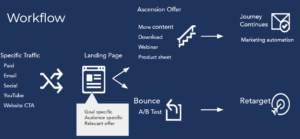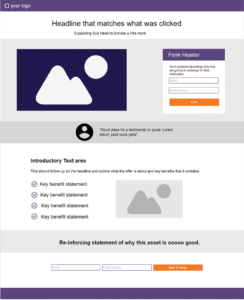Now that we’re weeks into stay-at-home orders and most of us are working remotely from the comfort of our homes, it’s a great time to review an aspect of marketing that often gets overlooked — content.
Risdall is constantly reminding our clients about the importance of fresh, relevant content. With so many people spending more time online and hungry for information, you have an opportunity to share your expertise with a vast audience who are still looking for information related to doing their jobs and ready to listen. Here are our thoughts on reviewing content and some ideas for ramping up your efforts.
Don’t create content for the heck of it
Before we get too excited, it’s important to remind everyone that it’s never a good idea to just create content for content’s sake. When creating anything, outline the key points you’re trying to get across to the audience and stick to this plan.
Take some time to review topics and ideas that are important and helpful to your client base. Also, make sure you (or your organization) has a specific point of view you’re trying to get across in every piece. Whether we’re in quarantine or not, it’s never a good idea to just parrot what other authors are saying.
Time to highlight your expertise
Whether your content is related to the quarantine or not, now is the time to showcase your expertise in the industries you serve. Take the time to craft content that connects your unique expertise to specific needs and interests of your audience.
You know your clients’ needs better than anyone else, and the better you can speak to meeting these needs (and solving their problems), the more powerful any content you create will be. Be specific about your approach and results. Your audience is looking for real, actionable items.
It’s probably time to create a big piece
A great way to generate a lot of content at the same time is to create a larger piece like an ebook or white paper. These large content types allow you to cover a variety of topics, then break the content into smaller pieces. A good ebook could be the reference point for months’ worth of blog posts that each include a call to action to download the full piece. There’s also a certain amount of authority that comes with creating long-form, useful content that educates your audience.
Bigger pieces of content typically take more effort to create than smaller pieces. Your subject matter experts may have more time available to dive into a topic, and you can then repurpose and use this content for other pieces in the future. Investing in content now may prevent you from taking up their time for input when their schedules are packed.
Google (and your prospects) love updated content
A great way to make sure your site is keeping the attention of search engines is to keep creating new content. Google has turned itself into an “answer engine” that provides users with the answers they’re looking for. Make sure your content is covering keywords and topics that prospects are including in searches, whether they’re typing out full questions or just specific words.
If your content topic is evergreen, you could see visitors coming for years to come. If it’s related to a current subject, you’ll see an uptick of visitors simply because it’s a topic that users are actively searching for right now.
Don’t forget about case studies and testimonials
The default for most of us tends to be blog and website content, but let’s not forget that client and customer stories and testimonials are an extremely valuable part of your content library and highly effective on pages of your website where prospects are reviewing specific products or services. This real-world “social proof” showcases your ability to meet the needs of clients and generally contain keywords and phrases that are commonly searched for by prospects.
Chances are your customers are experiencing a certain amount of downtime right now, and may have the time to write a testimonial or approve a case study. It’s also a great opportunity to keep communication channels open with your current and past clients, and to remind them of all the great work you’ve done together.
Put content creation into a regular schedule
While most of us still have plenty of regular job duties to attend to, we should really be taking any extra time we have to review and refine current content, not to mention creating new content. Even if it’s only for an extra hour a day, it’s the perfect time to get several months’ worth of blog posts, ebooks, and white papers written and ready for review.
If you need help getting started in this area, we’d love to walk through your current content strategy and how it can be improved. Whether it’s focused on creating new content or reviewing existing pieces and how they fit into your overall marketing strategy, Risdall’s team is ready to help.
We are in unsettling times with office closings, events canceled and many business activities in flux. However, we are still connected online and we can’t just sit around doing nothing. As marketers, we need to be creative, and continue to interact with clients and prospects, introducing solutions, meeting needs and doing the best we can despite the circumstances. Here are some thoughts to keep your company (not to mention yourself) connected with your audience while most of us are working from home.
First thing’s first
First of all, watch your existing campaigns. Make sure nothing inappropriate or irrelevant (ex. an event that was canceled) is being promoted. You don’t want to appear out of sync with what’s going on in our marketplace. (We recently got a message from a restaurant promoting franchising opportunities — while most restaurants are closed!)
People haven’t disappeared
Just because we’re not having in-person meetings and events doesn’t mean the world has stopped and people aren’t interacting. More importantly, users are consuming content like never before and are looking for relevant information and solutions that can help their businesses now and in the future. Here are some ideas for how to make the most of your marketing, even when most people are working from home.
Proactive outreach
Depending on your business, and the realities of a long-term quarantine, your product or service may be of help to your customers managing through this crisis. Now’s the time to reinforce that, while showing empathy. Let them know what you’re doing to be proactive and thoughts on how we’re all going to get through this together. An email or phone conversation to check in with a friendly “hello” and “how can we help?” can go a long way!
Over-communicate, letting your customers know if there’s going to be an impact on delivery, completion of projects, or any sort of delay during this time. Most professionals are in the same boat, attempting to work with limited resources, so make sure you’re in regular communication with them. Chances are they’ll be understanding as long as you let them know if something is changing.
Virtual booths
With so many high-profile industry events canceled in 2020, there’s a lot of reduced exposure. However, many of these organizations are turning their cancelled events into virtual trade show booths, allowing attendees (and even those who weren’t going to attend in the first place) access to the speakers, demos, presentations, and information provided virtually on a section of their website. Risdall has already helped clients make this transition after the sudden cancellation of HIMSS 2020 and is seeing very positive results. This inconvenience has sparked innovation and new ideas of how to do things differently for future events — building contingency digital plans or virtual booths for anyone interested in seeing the information that was to be presented at the event, not just the people who were planning on attending.
Targeted lead generation
If you aren’t doing this, now is the time to start. Creating targeted demand and lead generation campaigns can give you an edge in a marketplace that is more competitive due to this crisis. Defining your target audience and driving inbound sales engagement will result in conversions and sales. Even in a down market, there is still a need for your product or service and targeted inbound marketing allows you to find those who need your product and service and deliver a relevant message to them.
Update your metrics
Don’t wait until the end of the second quarter to reset your expectations for marketing results. We can safely assume numbers are going to be down across the board so make sure you and your leadership agree on updated goals and metrics for the coming months, if not year. We’re still not sure what the long-term impact will be so review and be realistic about what your business will (and will not) see.
Got extra time? Update your content
You’ve probably already seen cringe-worthy communication that clearly should have been removed from distribution now that events are canceled and most people are stuck inside. (For example, a retail store campaign is of little value right now when people are hunkering down.)
If you’ve got extra time with cancelations, it’s a great time to review things that often get placed on the back-burner; in particular content. Now’s the time to define and write future blog posts, long-form content like ebooks and whitepapers, and determine your social media posting schedule. Now is the time to create content that is educational and informative and positions you as a thought leader in your industry. Good content posted now can position you for greater visibility and boost your authority as things return to normal. How great would it be to have a significant portion of your content for the rest of the year done and ready for the coming months?
More than anything, stay active
The worst thing any business can do right now is be complacent. Everyone is still active online and available to receive your marketing and content. Work with your marketing team (or agency) to think through the best course of action for your business during times of uncertainty. If necessary, rethink your current plan to make sure you’re being creative about keeping your business visible and maintaining relationships. Things will return to normal and hopefully, the economy will come roaring back. What you do now will impact your business a few months from now.
Don’t panic and if you’d like to talk through ideas and strategy to keep your marketing successful while most people are at home, please contact us.
As with any marketing or business strategy, having some defined goals and objectives can help keep you focused on the right path along your optimization journey.
Along the journey you will often be presented with choices. When presented with any choice, always choose the one that helps inch you towards a goal.
Website Goals
What is the purpose of the website?
This is a question I usually ask when assessing websites for the first time. For me, it should be obvious. Crystal clear positioning, strong calls to action and well defined content paths (landing page > blog > resource > conversion etc etc).
Conversion Goals
The overall goal of any website would be to drive business. Typically that process is several steps (see customer journey map) or micro-conversions.
For e-commerce retailers, the transaction is the ultimate goal. For other websites (B2B, informational, content publishers, SAAS etc) the goals would likely be driving the prospect down the funnel.
Here are some general conversions you likely would track:
Top funnel conversions:
- Content consumption
- Asset downloads (infographics)
- Subscribe to content (newsletter, podcast, video series)
Mid funnel conversions:
- Resource downloads (whitepapers, ebooks, case study, checklist etc)
- Quizzes and surveys
- Webinars
- Events
- Catalogue
- Tripwire offer
Bottom funnel conversions:
- Product demo or free trial
- Pricing or spec sheets
- Product detail pages
- Contact (speak to a rep/ find a distributor / quote request)
SEO KPIs
Your SEO program goals will always start off being more general. Do not arbitrarily set performance goals like “increase organic traffic by 1000 views per month”.
For one thing, you need time to establish a solid baseline. That means that your analytics has to be configured correctly and collecting data for a reasonable amount of time.
What are good SEO goals to start with:
- Increase overall non-branded keyword rankings
- Increase ranking around a topic (multiple keywords)
- Remove roadblocks for search engines
- Decrease website errors (ex: 404)
- Maximize website performance
Once your site has been optimized, everything configured correctly and your content is in alignment with your keywords, you can start being more specific with your SEO goals. Once established, here are some other metrics that you can start to work on:
- Click-through-rate (CTR)
- Session Duration
- Bounce & Exit Rate
- Organic Impressions
- Organic Conversions
- Referral Traffic
There are a lot more goals & SEO KPI’s that can be layered in, as well as some that may be event or seasonal. To determine the specific goals and KPIs for your business, it’s best to partner with a digital marketing agency such as Risdall.
Risdall’s Guide to an Effective SEO Strategy explains the main concepts everyone should understand about SEO and the essential components that should be in every SEO plan. Click here to download your copy.
Part of any sensible SEO strategy is a firm understanding of your current “state of affairs”. The most effective way to determine your current standing is to conduct an SEO audit.
Why is this important? Well, you may uncover some technical roadblocks on your website that could take time and money to resolve. Furthermore, you could discover that your current SEO strategy is not performing as well as it could. It’s better to find out if there are issues upfront rather than waiting until after executing your plan.
SEO Audit Tools
There are incredibly robust SEO tools that can help you not only conduct your SEO audit but also help to understand the most effective steps to take to improve your SEO. While an SEO audit can be time-consuming and complicated, this process has been greatly improved by the use of SEO tools and services. These SEO tools can crawl your site look for known technical issues, and report back.
Most tools will report some sort of grade and give you a prioritized list of issues to fix.
Some great tools Risdall uses for website audits include:
- BrightEdge
- SEMRush
- Ahrefs
- MOZ
- Serpstat
- Screaming Frog
- Sitebulb
- Varvys
- Builtwith
- GTMetrix
- Google Lighthouse
The more premium tools frequently offer keyword research tools and competitor insights. Another key feature of a quality SEO tool is the ability to monitor your keyword rankings across search platforms. You’ll want to measure and monitor your impact on both technical and content optimizations.
The best tools can integrate into your existing Google Analytics and Search Console accounts. This will allow for more precise reporting and the ability to aggregate different metrics from various sources.
Keyword Rankings and Search Results
Ask yourself these three questions:
- Do you know what you currently rank for?
- Are these rankings in alignment with your audience and business goals?
- Do you have pages that are not being indexed that should?
To determine your current keywords, some of the above mentioned tools can analyze your current visibility.
Another key observation is the number of pages you are currently ranking for. This is easily accomplished by turning the search engine on your site. Type this into the search bar “site:yoursite.com“.
This will give an idea of how many of your pages are in Google’s index. Does the number seem high, low or just about right?
Google Tools Audit
Ensuring that your suite of Google tools are properly configured is the most crucial step in an SEO strategy. You must ensure that analytics is properly configured, the website has been submitted to Google and that you are taking advantage of tag management.
Remember: Google’s tools are very powerful, but out of the box they are set in a one-size-fits-all configuration. Like any tool, they need to be setup by experts and tailored to your website, audience and traffic.
Google Analytics Configuration Questions:
- Are you filtering out your own traffic?
- Are you filtering out your vendors traffic?
- Are you filtering spam/bot traffic?
- Are you excluding self-referrals?
- Are you excluding spam referrals?
- Are your audiences segmented?
- Are goal conversions setup?
- Is site search enabled?
- Is your AdWords account linked?
- Is Google Search Console linked?
- Are content groups enabled and correct?
- Is tracking code implemented properly?
Google Search Console Questions:
- Are https and www/ non-www versions setup?
- Sitemap submitted?
- Robots.txt file submitted?
- Is the website verified?
- Any crawl errors?
- Are resources blocked?
- Are there security or malware issues?
- Are there 404 errors?
Google Tag Manager Questions
- Is GTM installed?
- What tags are implemented and are they firing correctly?
- What events are being tracked?
- Is data being pushed to the data layer correctly?
- Is analytics implemented through GTM?
Unsure of where to start? Let us help! We provide clients with expert SEO services including SEO audits, optimization support, and more.
Who is coming to your website?
More importantly, who do you want to come to your website?
Having a clear understanding on who your prospect and what their search-intent and context is FUNDAMENTAL to driving the kind of traffic that is meaningful towards your goals.
We like to call SEO “intent based search optimization” (IBSO). What “IBSO” is really about is defining what is the prospect searching for at each stage of their journey, and which asset on what channel will satisfy that search.
- Intent – What is the prospect searching for?
- Context – Why are they searching for it?
- Asset – What assets will satisfy their search?
- Channel – Where should their assets live?
- Optimization – How will the prospect find the asset
- Ascension – What is the next step in the customer journey?
To really have a sound platform to work off, you ideally would have well defined customer personas and a customer journey map.
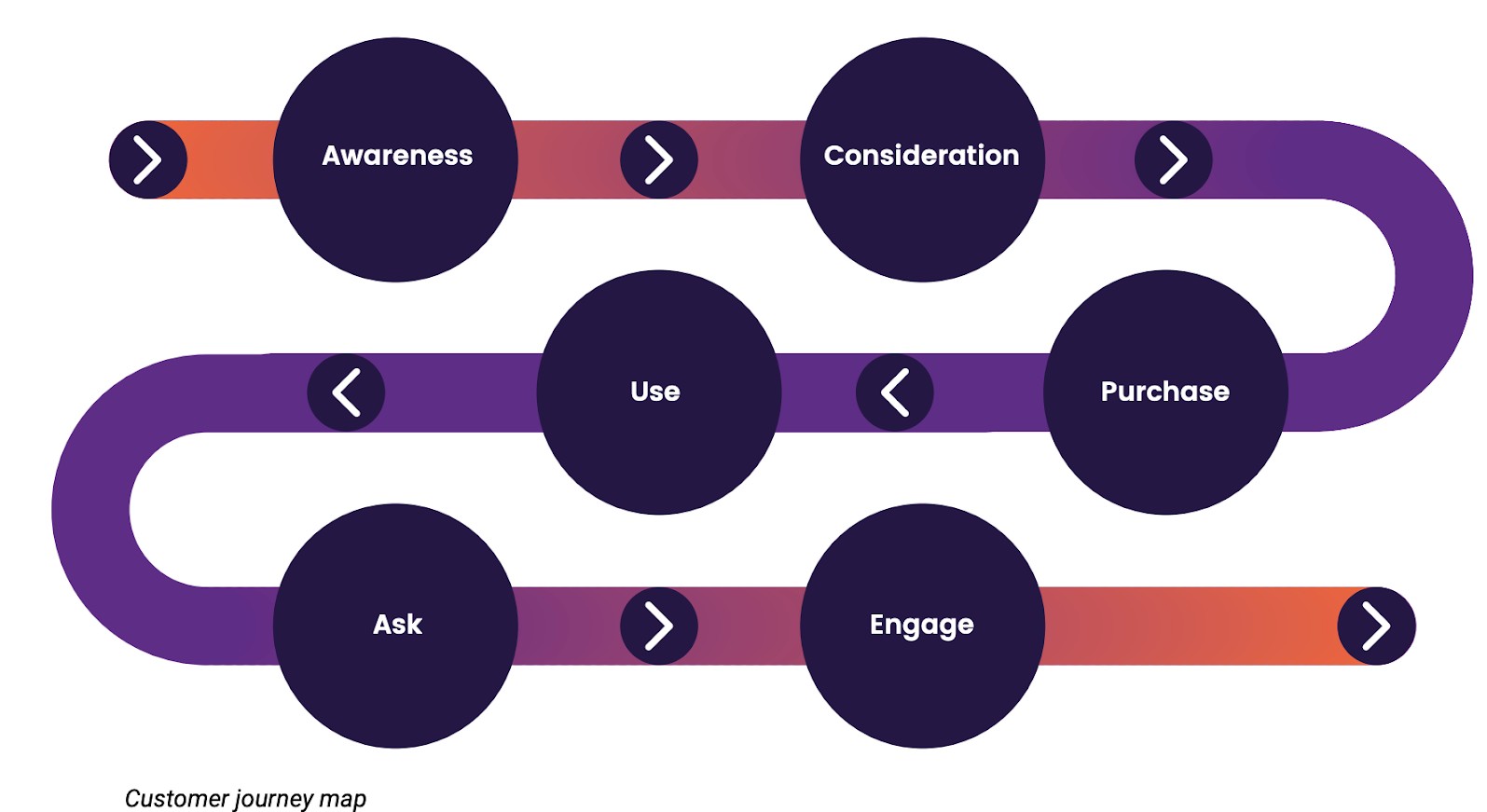
Defining the intent and path of your audience will ensure web users will find your site, find what they want on your site, and (ideally) buy your product or service. It’s important to note that user paths and intent is an evolving concept and should be reviewed on a regular basis.
Risdall’s Guide to an Effective SEO Strategy will explain the main concepts everyone should understand about SEO and the essential components that should be in every SEO plan.
Note – This blog was originally published on June 29, 2016 and has proven to be one of our most popular blogs. The points and message of this original blog remain true and we felt it was appropriate to share it again on Martin Luther King Jr. Day.
Communication was Dr. Martin Luther King Jr.’s forte. He is known as one of America’s most influential speakers, even 52 years after he gave his iconic “I Have a Dream…” speech.
During this speech, King captivated his audience with poetic language and thought-provoking ideas. He painted a picture of how life could be instead of focusing on the negative aspects of how life was.
Today’s communicators can learn several public speaking lessons from King’s famous speech, including using positive language, narrowing your focus and using your words to create a visual description.
Using Positive Language Makes Your Communication Clear
Even though violence was common around the country, King advocated the positive outcomes of an equal society, gained through dignity and discipline.
He didn’t accuse others of committing wrongs or encourage people to act violently. King used positive language to make his point of the benefits of taking the high road. Positive language is powerful because it makes your message absolutely clear to your audience.
The Best Communication Has a Narrow Focus
King had one goal with his speech: to encourage public opinion in favor of creating an equal society for all races. Every sentence in his speech works toward this goal by examining positive outcomes of eliminating racism.
By narrowing the focus of a speech, you will stay on point and give your audience the most information about one specific topic.
Use Common Language in Your Communication to Relate to Your Audience
King’s speech was written for the average American, so he used plain language to deliver a clear message that was understood by everyone.
The lesson here is to tailor your speech to your audience.
If you’re presenting to high-level professionals, their common language is bigger, more complex words that are used in their careers. This language will make sense to them and help you gain credibility as a speaker.
However, if you’re presenting to an eighth-grade class, their everyday language is simple words that will be easily understood.
Depending on your audience, adjust your language to ensure your listeners get the most out of your speech.
Use Communication to Paint Pictures with Words
The reason King’s speech was so vivid is because he included colorful language and used his words to paint a picture in the minds of listeners. King used metaphors throughout the entire speech, bringing simple sentences to life. A few examples include:
- Comparing the Declaration of Independence, in which every American is guaranteed the unalienable rights of life, liberty and the pursuit of happiness, to a bad check that African-American’s attempted to cash, but was returned due to insufficient funds.
- Comparing segregation to a dark and desolate valley, and comparing racial justice to a sunlit path.
- Comparing the desire for freedom as a thirst, and comparing the road of violent actions to “drinking from the cup of bitterness and hatred.”
A well-crafted comparison can liven up your presentation and help your audience understand the point you’re trying to make.
These are just a few of the communication lessons that Martin Luther King Jr. taught us through his memorable speech. Are there others you can think of?
If you’re interested in honing your public speaking skills when talking with the media, contact us.
As the digital landscape continues to evolve and change, it’s hard to know what to focus on to make the coming year successful. We’ve asked the members of Risdall’s team to share some observations and tips for 2019. Here are their answers:
Mahmood Khan – SVP, Digital Media & Analytics
Measurement and attribution
Smart-media mix allocations that are data driven, not based on a gut feeling. Whether your company has a mid-sized or large budget, determining how to measure each media channels’ attribution is key to smartly allocate your budgets. This could be for multi-channel lead generation efforts tied to a sales CRM, online-to-offline attribution for determining lift in foot traffic or, in the case of e-tailers, multi-touch attribution that can pinpoint channels that drive lift in sales conversions.
Read more about attributing offline traffic to online sources in our blog post.
Erik Hinds – VP, Digital Strategy
Optimizing content for featured snippets and voice search
Really, this was the “it” thing in 2018 but it is still very important. Now that we have a good amount of historical trends of the types of content, the format and keyword triggers that Google is looking to promote to “position 0” we can really start to optimize. A lot of the top flight SEO tools like BrightEdge and SEMRush make identifying opportunities easier than ever. We’ve seen our clients achieve a 40+% click-through rate by properly utilizing these tools.
Video SEO
Often overlooked as a channel for search optimization, YouTube offers a lot of fertile ground for organic visibility. Did you know YouTube is the second largest search engine next to Google itself? But like Google search, YouTube has an algorithm that can be optimized for. How would you like if your videos showed up as suggested videos after someone plays your competitor’s video?
Dave Schad – EVP, Managing Director
The use of data to integrate marketing and sales functions
Far too often we see companies who have separate silos of sales and marketing activity and metrics reporting. Companies need to be deliberate in bringing sales and marketing together to integrate data sources to truly measure what is working. During our strategic planning process, we encourage sales and marketing to work collectively to define KPIs and agree on attribution across channels and technologies. In doing this, you will build greater understanding between sales and marketing, make better collective decisions, and have a clearer picture of ROI driven by your digital marketing efforts.
Kristen Nottingham – Digital Media Planner
People are influenced by people similar to themselves
It’s easy to forget that people are influenced by others similar to themselves so start your campaigns by micro-targeting segments of people with related job titles or fields of study. Because people are on their best behavior with their colleagues they are more likely to comment on your ads in a positive and professional manner. In doing so, they build the social proof your brand needs. And don’t be afraid to target very specific titles and industries on social media. We’re finding that nearly everyone is active online and looking for info related to their career. They will respond to information in their social feed that is relevant to them.
Dave Folkens – SVP, Director of Account Service
Video, Video, Video
A few years ago having video content was a nice way to set yourself apart from the competition. Now, video is a key component of a successful and comprehensive content strategy. When we’re talking about video as part of the content mix, it’s not all a highly-produced, difficult endeavor. Simple, short videos that are authentic and created for social channels can provide great engagement opportunities for your brand. Fortunately, it’s never been more cost efficient to create quality, engaging video either in-house or with a trusted partner.
Joel Koenigs – Chief Technology Officer
Don’t forget about regulations
Many US-based companies have been slow to respond to GDPR from an operational and marketing perspective. Those that have are in a stronger position to comply with upcoming domestic regulations such as the California Consumer Privacy Act (CCPA). Those that have not risk fines and legal fees, and are likely delaying the inevitable. Similarities between the CCPA, GDPR and previous privacy measures such as Safe Harbor, Privacy Shield, etc. provide more than writing on the wall as to legal expectations for the treatment of personal data. Marketing teams should familiarize themselves with the regulations and adjust strategy, tactics, budgets and partners appropriately.
Jon Bauer – Business Development & Marketing Director
Personalization
Prospects and clients are used to their online experience being personalized to their preferences and tastes. If you’re not customizing their journey through your site, messaging and content, you’re missing a huge opportunity for connection and (eventual) sales.
Contact us today to talk more about how we can optimize your website and apps to make sure they’re allowing a personalized experience for every visitor and customer.
The end of the year is upon us, and it’s the perfect time to take a look at where marketing is going for the manufacturing and industrial industries.
While every manufacturing company is unique, there are specific industry trends and efforts that are essential for staying ahead of the competition and ensuring you’re achieving the highest return on investment (ROI) for your marketing dollars.
Trend #1: Content is still king
Content marketing has become so mainstream in the manufacturing industry that 82 percent of manufacturing companies are engaging in some form of content marketing.
Establishing yourself as a credible thought leader is even more essential when you consider that more than half of B2B buyers make their purchase decisions before ever talking to anyone at your company. In fact, according to Gartner, one of the main requests from B2B buyers is easier access to product, company, and industry information without talking with a salesperson. It’s important for manufacturers to establish their credibility by creating white papers, blogs, e-books, and even videos that help customers answer questions and solve problems.
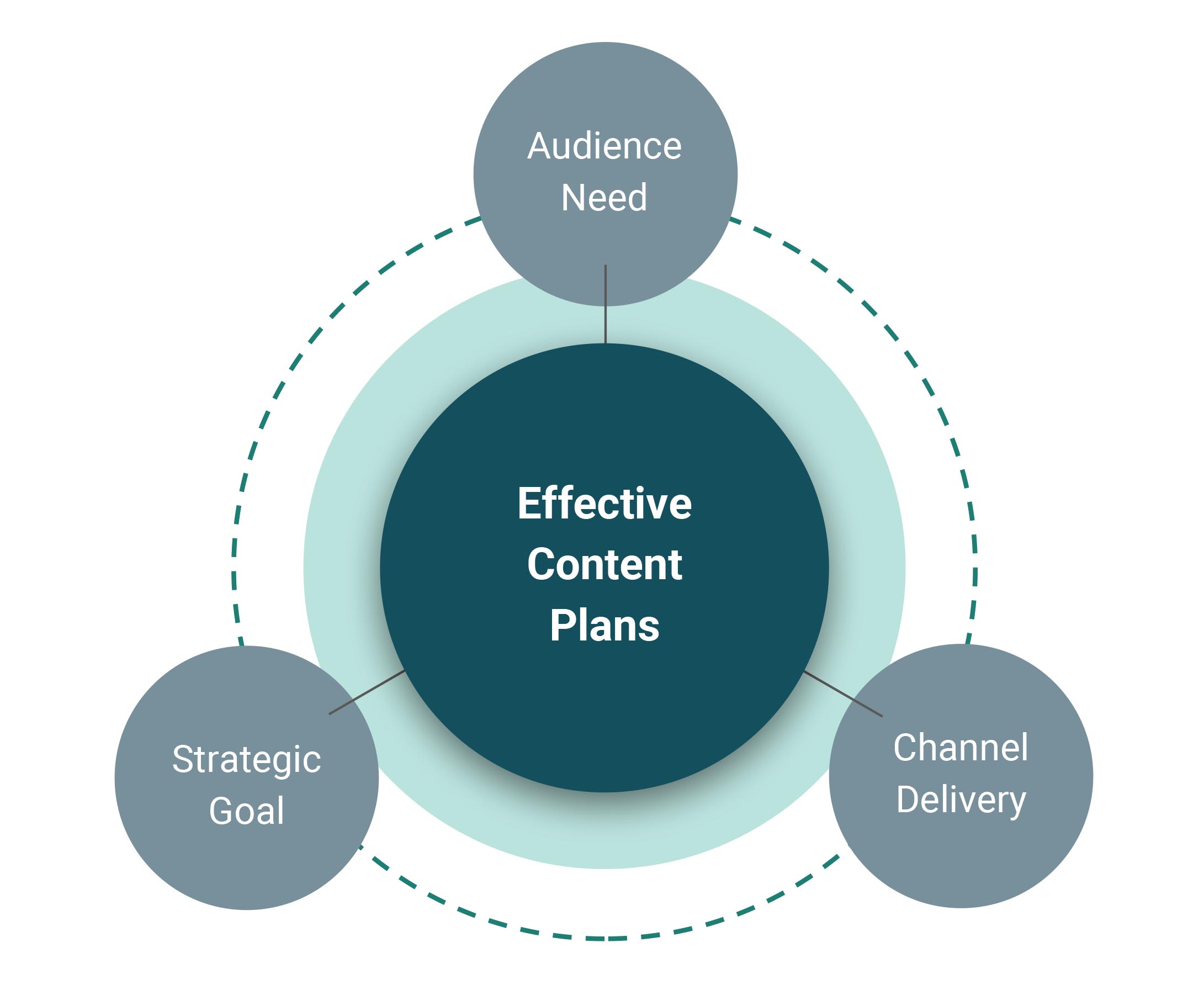
A good starting point for content marketing is your audience’s needs, your strategic goals for content, and the channels you’re going to use to share your messages. Many companies want to speak in sales language, but audiences think in terms of my need.
Understanding audience needs and developing persona-based content that addresses their questions is essential to any effective content plan. Ask questions about your audiences and what they want to know to establish a foundation of understanding about what motivates them.
When planning content, it is essential to think in strategic phases to accomplish different marketing objectives such as thought leadership, awareness, lead generation, prospect follow-up, and lead nurturing. A robust content program integrates across multiple strategic phases and drives toward your goals. Laying out a long-term plan also provides structural discipline, allowing you to build rich libraries of content from existing internal resources with clear direction and efficiency.
Learn how we achieved results for our client Wold with strategic content planning.
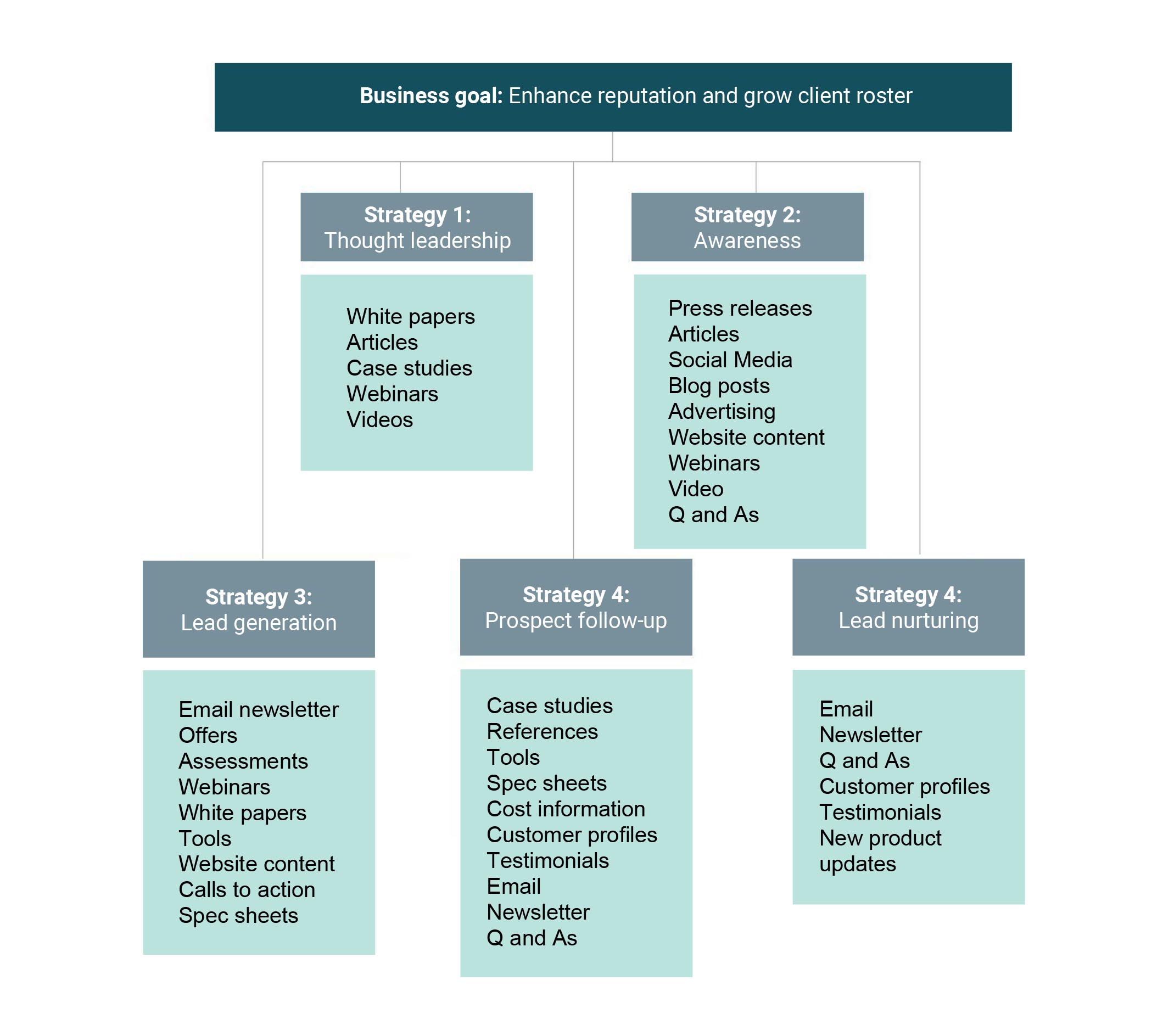
If everyone gathered information from a single source, content marketing would be simple. But audiences have different preferred channels where they seek answers to the questions they have. Good content marketing programs take content and shape it to appropriately fit a channel (industry magazines, social media, online search, etc.) for the most effective delivery and discovery.
Strategic content assessments, planning and reformatting can take existing content and give it renewed life. Be sure to review what you’re making available and making sure it’s still appropriate, has the right message, and is being shared on the appropriate channels.
Trend #2: The continued rise of video
Over the past three years, marketing professionals have been talking about how video will dominate all areas of manufacturing marketing. It turns out they were correct, and this trend is continuing into 2019.
It’s worth considering that viewers retain up to 95 percent of what they watch in a video, so it’s not surprising that complex instructions and overviews are extremely effective in a video format.
Here at Risdall, we’ve developed many different video strategies for our clients, including product demos, customer testimonials and how-to-videos. We’ve also helped efforts to optimize an existing library of videos.
No longer cost-prohibitive, there are a variety of low-cost, high-quality video creation options available for companies looking to develop effective video content. Talking through your goals, we can quickly outline a video creation and promotion strategy that fits in perfectly with your marketing efforts.
Trend #3: Precision lower funnel engagement and lead generation (aka laser customer targeting)
Nowhere is tailored content more powerful and necessary that in the effort to drive qualified leads. These individuals show a high interest in a product or service and the chances of making an effective transaction are higher.
With today’s data analytics and artificial intelligence capabilities, we can identify and target very specific audiences with incredible accuracy like never before. This allows manufacturers to deliver the right content with precision and provide a real-time, tangible opportunity to successfully engage with the exact audience and build a direct line to conversion and sales.
Combined with other content initiatives, lead generation can begin the process of closing a sale and provide your organization with a wealth of opportunities and measurable ROI.
We strategically increased the number of qualified, lower-funnel leads for Ecolab.
Trend #4 – The use of analytics and measurement
With data coming in from Google Analytics, SEO platforms, CRM systems, and social media accounts, there’s never been more information available. It’s important to capture and analyze this data properly to make sure your marketing efforts are attracting the right visitors and that these visitors are turning into customers.
Whether your buyer’s journey is completed entirely online or involves offline visits to a showroom, Risdall can properly track which efforts successfully turned a prospect into a customer.
Conclusion
As technology continues to evolve and new tools become available, more and more data will become available. Appropriate analysis is essential with getting correct and actionable insights from this data, which can feed granular detail into the buyer’s journey and optimization of efforts. The right data reporting can measure effectiveness and ROI of your efforts and determine which content is most impactful. For lead generation campaigns, data can actually provide great insight into the potential revenue that can be gained from content marketing efforts.
We have just scratched the surface on all of the digital marketing tactics available for manufacturers to use as they connect to customers. Make sure you’re working with a marketing firm that understands your industry to determine the appropriate mix of marketing efforts.
The Risdall digital team attended DNN Summit, the largest DotNetNuke conference in the United States. The conference offered sessions on the direction of the DNN platform, modern development practices, current themes in digital marketing and practical advice for running DNN websites across multiple verticals. Keynotes were delivered by Andy Tryba, the new CEO of DNN Software, and Shawn Walker, the creator of DNN.

Risdall team member Erik Hinds led a comprehensive session on creating high-converting landing pages in DNN. Erik addressed all aspects of landing page creation:
-
- Definition & goals
- Creating a workflow
- Audience definition
- Crafting an offer
- Tools for effectively building a page
- Best practices for landing page design
- Conversion Rate Optimization (CRO)
- How to build landing pages in DNN
The bulk of the session focused on planning a proper conversion campaign by addressing the prospect’s needs, challenges, pain points and questions. Erik offered several strategies and tools to help identify those points and how your offer can help. Some of the tactics included:
- Creating customer personas
- Using a “Before and After” grid
- Outlining your touch points with a customer journey map
- Marketing automation
As Erik said, “Landing pages are merely a conduit for creating multiple touch points in a marketing program. The effectiveness of the landing page is contingent on creating a very specific offer and presenting it to a segmented and qualified audience. Speaking in a transformational manner and presenting your solution in the right sequential order is much more effective than directing high volumes of traffic at a web page and hoping for the best.”
Best Practices for Building Landing Pages in DNN
A fair amount of time was dedicated to covering best practices when designing and developing a DNN landing page. These best practices are universal across CMS platforms and addressed four key areas:
- Offer – is the offer clear, relevant and maintains “ad scent”?
- Form – are you asking for the right information, lowering form friction and building strong CTA’s?
- Building trust – are you using strategies for positioning your offer as trustworthy with testimonials and other forms of social proof?
- Visualization – have you ensured the page is laid out correctly, has visual appeal and doesn’t contain exit paths?
Testing CRO in DNN Landing Pages
Building a landing page is only the beginning of a successful landing page campaign. Erik discussed how to conduct optimization testing and some of the tools that can be leveraged.
As Erik noted, “Collecting quantitative and qualitative data is crucial to making smart decisions when determining whether the page is successful. There are a multitude of third party tools that can be easily integrated into DNN.”
Some of the types of testing and analysis Erik recommends are:
- Heat mapping / click testing
- Session recording
- Form drop off analysis
- Exit polls
- Preference testing
- 5 second testing
Erik finished up the presentation with an engaging Q&A session with audience members on some of the challenges they have faced when creating landing pages in DNN.
“It was a really great audience consisting of marketers and developers across multiple verticals. I loved how they engaged with thoughtful questions. I hope they received a lot of value from the presentation and Q&A.”
-Khan to lead charge in digital solutions as SVP Digital Media and Analytics-

ROSEVILLE MINN. (August 15, 2017) – Risdall is excited to continue the expansion of its digital marketing capabilities with the addition of Mahmood Khan as Senior Vice President of Digital Media and Analytics. Khan joins Risdall from Periscope where he served as the Director of Media and Analytics and led a team of digital media, paid search and SEO professionals. Prior to Periscope, he led international ecommerce campaigns for clients at Digital River. Khan currently serves as a Member of IAB Digital Media Buyer and Planner Certification Program Exam Committee which sets the standard for global certification. Khan will lead digital initiatives with a passionate data-driven perspective and his extensive expertise builds on Risdall’s integrated model of digital platform development, digital content marketing and communications, paid engagement and analytics.
In joining Risdall, Khan said, “The advanced web development and app development capabilities Risdall already possesses will easily integrate with the best practices and disciplines I am bringing and ultimately result in a very integrated digital solution for clients.”
“We are very excited about Mahmood joining the team,’ said Ted Risdall, Chairman and CEO of Risdall. “His knowledge and high level of expertise with national and global initiatives will help Risdall lead clients to live fully and effectively in the digital world and enable us to deliver business results that matter.”
About Risdall
Risdall is a full-service integrated digital marketing agency. For 45 years, Risdall’s marketing, communications and digital capabilities have constantly evolved, driven by an independent culture and a commitment to achieving our client’s business goals. For more information visit www.risdall.com
Grammar is critical to how smoothly an article reads. While not every reader will be a stickler for grammar, inconsistencies and mistakes can still throw off their ability to understand content.
When writing for the web, whether for journalism or marketing, AP style is the guide to abide by. Following these rules strengthens readability no matter the medium. Below are some explanations of the more confusing AP style rules that typically impact the readability of the writing.
9 of the Most Important AP Style Rules
- Rules for Titles of Media
Publications such as journals or newspapers are only capitalized. Anything falling under the category of art, literature and so on have titles in quotations.
Example: The Star Tribune gave “Inside Out” an emotional review.
- Rules for Titles of People
Capitalize a title if it goes in front of someone’s name. If the title stands alone, leave it lower case.
Example: Governor Dayton met with the president.
- Courtesy Titles Are Not Used in AP Style
Do not use Miss, Mr. or any other courtesy titles. The exception to this is if using those titles will clarify different people with the same last name.
Example: Mr. Shifty stated he was the only executive involved in the embezzling scheme, but Mrs. Shifty testified that Shady and Lawless also took part.
- Events to Capitalize
Official events and holidays are capitalized, but seasons never are.
Example: Independence Day followed Pride Weekend during a rainy summer.
- Rules About Time
Use a colon to separate hours from minutes unless the time is on the hour. Do not spell out numbers when stating exact times.
Example: 2:52 p.m. 8 a.m.
- Numbers in AP Style
Write out numbers smaller than ten unless they accompany a phrase like million or inch.
Example: Three different universities have banded together to analyze over 700 artifacts, which they estimate to be 2 million years old.
- Dashes and Hyphens and Many Exceptions
Hyphens string together words and dashes string together sentences, usually. Hyphens keep together words like 9-year-old or self-esteem, but any number of special cases exists. Check the style guide if your hyphen senses start tingling. Dashes are even more mysterious. There is the em dash (—) and the en dash (–). The em dashes act like parentheses or commas to divide up sentences.
Example: Dr. Neko said the rescued cats had several parasites—the recent weather has been conducive to parasitic growth cycles—and they would not have lasted much longer without her care.
En dashes show ranges, such as 5–4 vote or Minneapolis–Miami flight. Dashes and hyphens have many different uses and every computer seems to format them in a different fashion. Check with your editor about any special rules or formatting they prefer.
- Toward, Forward and Similar Words in AP Style
These do not end with an s, nor do any other directions ending in “ward.”
- AP Style Drops the Oxford Comma
The Oxford comma is a comma that appears before a conjunction in a list and AP style officially ignores it. However, different publications may choose to break this rule, so use whichever your editor prefers.
With an Oxford comma: His new diet prevents him from eating meat, gluten, and dairy.
Without: His new diet prevents him from eating meat, gluten and dairy.
Keeping consistent with these rules will only help readers. They may not love a piece of content simply because of its impeccable AP Style, but they will appreciate the tidy presentation the AP style rules allow.
Photo Source: Flickr Creative Commons – “Typewriter”
It can be easy to jump on the bandwagon of using holidays to start a promotional campaign for your business. While it makes sense for some companies, it doesn’t make sense for all. Especially when it comes to St. Patrick’s Day.

Deciding whether or not to participate in St. Patrick’s Day Marketing
If you’re in the business of bars, beer or green food dye, the answer is an overwhelming yes, you should participate in St. Patrick’s Day.
However if your business falls into the 99 percent of other products or services out there, you should consider the following two questions to decide whether or not St. Patrick’s Day marketing is an efficient use of time and money for your company.
Does St. Patrick’s Day marketing fit with your brand?
The big question here is whether the message of St. Patrick’s Day fits with the message of your brand. You should have a solid understanding of your brand’s voice, image and values before participating in any event – holiday or otherwise.
For many people, St. Patrick’s Day is associated with parades, shamrocks and the luck of the Irish. It’s also associated with pub-crawls, green beer, green rivers and “Kiss me, I’m Irish” T-shirts.

To determine whether you should participate in St. Patrick’s Day, compare the values of your business to the values of St. Patrick’s Day. If they align in a way that will make sense to your audience, then go ahead.
Another thing to consider is if a holiday post is within the scope of your brand’s voice. If your social media or blog is consistently sharing serious topics or information, then it may not be within your brand voice to do a light-hearted holiday message.
For example, let’s examine Law Firm A, which specializes in mergers and acquisitions:
- The company portrays a knowledgeable voice in its field by sharing successful case studies on its blog.
- The company has a professional public image portrayed through a monotone color scheme and plenty of photos of lawyers suited up with their arms crossed.
- The company values its top place as one of the state’s most successful merger and acquisitions law firms, and it values expert lawyers in this field who have a proven track record for winning cases.
On the other hand, we have Law Firm B, which specializes in accident injury cases.
- The company portrays an informal voice by avoiding jargon on its website and sharing common pop culture lawyer references via social media.
- The company portrays a personable public image by using photos of smiling lawyers in dress shirts and by hosting Twitter chats to answer the public’s legal questions for free.
- The company values its place as a people’s law firm, available for everyone.
Law Firm B would be more likely to participate in St. Patrick’s Day marketing than law firm A because it has a more relaxed voice, image and values.
If your business needs to be taken seriously to be successful, you may want to steer clear of associating it with St. Patrick’s Day if you cannot come up with a unique and engaging way of communicating the holiday message.
Does your St. Patrick’s Day marketing link your brand’s image with the holiday?
With all marketing, we want to leave a lasting impression with our audiences and further our business goals. In order to do this, we need something more creative than, “Share this post if you’re feeling lucky!”
If you can come up with an idea that shows your brand’s image and relates it to St. Patrick’s Day in a clever way, then of course, join in the festive marketing.
Best Practices for St. Patrick’s Day Marketing
Show your personality.
It’s not just about St. Patrick’s Day; it’s about your company! Use the buzz of St. Patrick’s Day as a platform to share your brand’s personality.
Offer your audience something.
If it’s within the capacity of your business to hold a promotion for a prize, a special discount or additional loyalty points, now is the time to do it.
Know your history.
If you are going to hold a St. Patrick’s Day contest, make sure you know more about the history of the event than your audience does.
Promote the holiday internally.
Encourage your coworkers to dress up and host a festive get-together with St. Paddy’s-themed foods or Irish beer taste testing. Share photos on social media, and ask your followers how they celebrated the holiday.
Play with the word green.
If your company has strong recycling habits, now is a good time to talk about them by playing with the word ‘green’ in your posts.
Engage with your audience.
Always remember, social media is social. Facts are fine, but engaging with your audience is like finding a pot of gold at the end of a rainbow.
St. Patrick’s Day marketing is a no-brainer for some businesses, but for others, it can be a waste of time or send unintentional messages. It all comes back to whether or not your brand’s voice, image and values align with St. Patrick’s Day.
Photo credits: cobalt123, Sébastien Barré, geraldbrazell,
